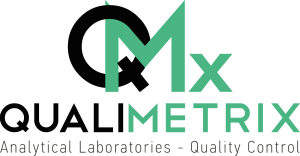
On 15 January 2020, the long-awaited new ISO standard 10993-18 was released. Following the release of the major standard of 10993 series on 2018, the new standard for Chemical Characterization picked up the torch towards the transition to the stricter MDR requirements.
The new standard which is significantly larger than its predecessor (74 pages versus 31 pages), introduces to the world of Medical Devices, terminology and methodologies already established in the Pharmaceutical industry. From the title of the document, we can understand that the risk assessment process is clearly emphasized and the integration and harmonization of the chemical characterization with the biological evaluation process are already underlined in the introduction.
Revised and comprehensive chemical characterization process flowcharts are established, including Extractables & Leachables (E&L) analysis. E&Ls are pointed out as major aspects of the chemical characterization process with a significant number of references throughout the document (more than 100 references on 10993-18: 2020 versus 3 references on 10993-18: 2005). It is important to note that the revised standard, via the use of the provided flowcharts, offers the required level of flexibility required to address the diversity of chemical characterization “situations” that may be encountered. This diversity is mainly attributable to:
a) the differences in the amount of information that is available regarding the devices’ configuration and composition,
b) the availability or not of an “equivalent” device,
c) the differences in the nature and duration of contact.
The flowcharts provide multiple points of entry and exit and no step is considered as a prerequisite for moving into the next, as long as a solid and scientifically sound rationale is provided. Thus, the different scenarios may be effectively handled through the flowcharts which serve as an indispensable aid for selecting the optimal pathway to establish the actual clinical exposure to leachables.
Testing approaches unique to chemical characterization, including principles of sample extraction are clarified. Advances of the last decade in the pharmaceutical field are integrated in the document, providing valuable information about the extraction techniques, such as simulated or exaggerated extractions.
A discussion of considerations and requirements related to analytical method qualification is included in Annex F. An analytical method must be qualified to establish that it is suited for its intended purpose. This Annex comes to define the differences between a screening and a targeting method in terms of purpose and function and sets out the qualification parameters that need to be established in order to ensure the validity of the results which are usually based on sophisticated techniques and in-house methodologies.
Last but not least, the analytical evaluation threshold (AET; concentration threshold below which extractables or leachables identification and quantitation is not needed) is introduced and connected with the TTC (Threshold of Toxicological Concern) or another Dose-based threshold. Using the AET, screening methods can be successfully established, in order to evaluate the total toxicological profile of the device or materials.
As stated in the document “Generally, biocompatibility information can be obtained from two types of assessments: (1) chemical characterization coupled with relevant toxicology data and (2) biological testing”. The above quote, stresses the great importance of chemical characterization, which can be the cornerstone and the driving force of every biological evaluation plan within a risk management process, reducing the cost and timeline of the CE mark procedure, by waiving time-consuming and expensive biocompatibility testing.
For more information, please fill out the enquiry form attached to this page.

